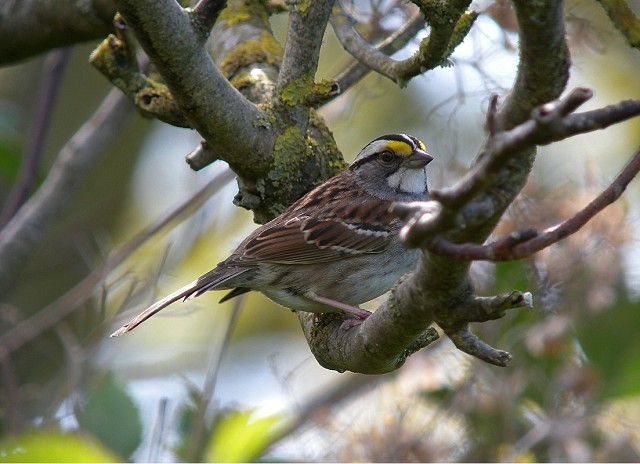A unique study of White-throated Sparrow has identified a biological pathway connecting variation in the birds' aggression and parenting behaviours in the wild to variation in their genome. The Proceedings of the National Academy of Sciences (PNAS) is publishing the results of the experiments, conducted by the lab of neuroscientist Donna Maney in Emory's Department of Psychology. The research, which comprised behavioural observations of the study subjects in the field and laboratory analyses of their gene expression in the brain, showed that variation in the expression of the oestrogen receptor alpha (ER-alpha) gene strongly predicts the birds' behaviour.
"We believe this is the most comprehensive study yet of how the rearrangement of a chromosome affects social behaviour in a vertebrate," says Brent Horton, a post-doctoral fellow in the Maney lab and lead author of the study. "So much of the process of genetic discovery is restricted behind closed doors in a laboratory. But our study began in the woods, where we first observed the social behaviours of the actual subjects of our experiments in their natural setting. The results provide valuable insight into the mechanistic basis of aggression and parenting in all vertebrates, including humans."
White-throated Sparrow is considered a good model organism for the genetic basis of behaviour due to a genetic event that has divided the species into two distinct forms that differ in their behaviour. These two forms, the white-striped morph and the tan-striped morph, are easily distinguished by their plumage markings. At some point during the evolution of the species, a chromosome broke and flipped. This process, called an inversion, rearranged the sequence of the chromosome. The white-striped birds, which all possess at least one copy of the rearranged chromosome, tend to be more aggressive and less parental than the tan-striped birds, which do not have the rearranged chromosome. "The two morphs work beautifully in evolution because one color morph almost always mates with the opposite colour morph," Horton says. "They complement each other."

'White-striped' White-throated Sparrows were found to be more aggressive than their tan-striped counterparts (Photo: John Rowe)
The scientists knew that the different behaviours of the two sparrow morphs were linked to the chromosome inversion. "We wanted to know what genes captured by that chromosome also differ between the morphs, in order to identify the genetic mechanisms that may explain the behavioural differences," Horton says. "The song of the birds is a form of aggression. They're saying 'get out of my territory.' The rate at which they sing gives a measure of their level of aggression."
The field observations were followed by laboratory analyses of the study subjects, to home in on differences in their neuroendocrine gene expression. The researchers focused on ER-alpha as a primary candidate, since it is one of the genes captured by the chromosome inversion and had been previously linked to social behaviours in vertebrates. Their analyses documented how the genetic differentiation between the morphs affects the transcription of ER-alpha. In one brain region thought to be important for aggression, white-striped birds had three times the level of ER-alpha than did the tan-striped birds. By looking at both the behavioural data and the lab data together, the researchers found the expression of ER-alpha in that region and others predicted variation in territorial aggression and parenting.
"The behaviours that differ between the morphs are known to rely on sex steroid hormones such as testosterone," Maney says. "But we already showed in 2009 that even when their testosterone levels are equal, the white-striped males still sing more than the tan-striped males. This finding led us to suspect that brain sensitivity to hormones differs between the morphs. ER-alpha has a hormone receptor that makes the brain sensitive to testosterone, so it makes sense that the white-striped birds have higher levels."
The researchers hypothesize that the mechanism they have identified may have played a major role in behavioural evolution. "Humans also show variation in aggression and parenting," Horton says, "but we know little about what contributes to this variation and how our behaviour can in turn affect our brains. This bird gives us important clues about what to look for as we try to understand the complex interplay between genes, proteins and our own social behaviours."
References
B. M. Horton, W. H. Hudson, E. A. Ortlund, S. Shirk, J. W. Thomas, E. R. Young, W. M. Zinzow-Kramer, D. L. Maney. 2014. Estrogen receptor polymorphism in a species with alternative behavioral phenotypes. Proceedings of the National Academy of Sciences; DOI: 10.1073/pnas.1317165111.
Original article adapted from Emory Health Sciences.


